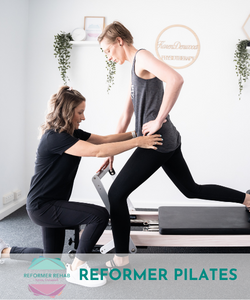The pelvic floor muscles play a crucial role in supporting the pelvic organs, maintaining continence, and sexual function. However, many women don’t know how to properly engage and strengthen these muscles, which can lead to pelvic floor problems such as incontinence, pelvic pain, and prolapse.
This blog post will highlight the importance of pelvic floor muscle training exercises and offer tips on how to perform them correctly and effectively.
Why Are Pelvic Floor Muscles Important?
The pelvic floor muscles sit at the base and provide the floor to our pelvic floor. They are a group of muscles that support the pelvic organs, including the bladder, uterus, and rectum. These muscles play a crucial role in maintaining continence, sexual function, and supporting the lower back and pelvis.
like other muscles in the body, the pelvic floor muscles can become weak, tight, stretched, overworked and dysfunctional over time. The primary causes of pelvic floor dysfunction include:
- Pregnancy
- Obesity
- Menopause
- Chronic Constipation
- Chronic cough
Pelvic floor dysfunction can lead to
- Incontinence (leaking urine /faeces/wind)
- Pelvic organ prolapse (when the pelvic organs bulge into the vaginal canal)
- Pelvic pain
- Pain during sex
Pelvic Floor Muscle Training Exercises
You may have heard or seen pelvic floor exercises referred to as Kegels, however – Kegels are generally associated with “squeezing” whereas PFMT involves a multifaceted approach and focuses on strength, co-ordination, motor programming, endurance and relaxation/ lengthening.

Here are some tips for performing pelvic floor muscle training exercises correctly and effectively:
-
Identify the Pelvic Floor Muscles
The first step in performing pelvic floor muscle training exercises is to identify the pelvic floor muscles. To do this, imagine that you are tightening the muscles around the back passage to stop wind.
-
Practice lengthening the Pelvic Floor Muscles
It is important to allow the pelvic floor muscles to relax and lengthen prior to activation. This enables the muscle to work through their full length. To do this – take a deep breath into the base of the lungs- allowing the lungs to expand front and back side to side – also known as 360 degree breath. You should feel / see your abdomen inflate slowly like a balloon. As you exhale the muscles will start to recoil – at the end of the out breath is the optimal time to contract your pelvic floor muscles by tightening through the back passage as if stopping wind.
-
Practice the Exercises
Once you have identified your pelvic floor muscles, start practicing the exercises by contracting and relaxing them. Begin by contracting the muscles and holding the contraction for 5 seconds before relaxing with a deep 360 inhale. Repeat this process up to 10 times, however this may take time so be patient and do what you can with good form.
-
Increase Intensity and Duration
Over time, you can increase the intensity and duration of the exercises to challenge your pelvic floor muscles further. Try contracting your muscles for longer periods of time, or contracting them more intensely (be careful not to squeeze your buttock muscles). You can also try different positions, such as standing or sitting, to vary the challenge.
-
Incorporate into Daily Routine
Once you have mastered your technique, aim to incorporate pelvic floor muscle training exercises into your daily routine. Try doing them while brushing your teeth, watching TV, or before bed. Aim to complete at least 1 x focused session of pelvic floor exercises daily – this helps strengthen the brain–body connection.
Conclusion
Pelvic floor muscle training exercises are a simple yet effective way to improve pelvic floor health, prevent incontinence, and improve sexual function. By practicing these exercises daily, you can keep your pelvic floor muscles strong and healthy. If you are experiencing pelvic floor problems, consult with a women’s health physiotherapist for personalized advice and treatment.
Thank you for reading this blog post on pelvic floor muscle training exercises. Remember to always prioritize your pelvic floor health, and don’t hesitate to reach out to me if you have any questions or concerns.
Thanks and Much Love Karen
Your Pelvic Health Cheerleader x









